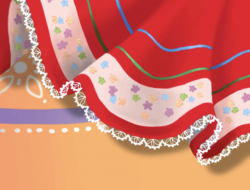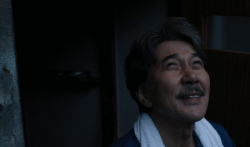In the pages of this week’s New Yorker, a cartoon depicts a group of patrician-looking types chatting in front of a Calder-ish mobile and a squiggly-lined painting. “Jim’s a good old-fashioned modernist,” says one to the others.
“Good old-fashioned modernist” is an apt moniker for Ernst Ludwig Kirchner, co-founder of Die Br?cke and perhaps German Expressionism’s most remarkable artist. Like the turn-of-the-century Secession movements in Munich, Berlin and Vienna before it, Die Br?cke was dedicated to the rejection of age-old art-school formulas in favor of more challenging interpretations of reality.
The National Gallery of Art, in conjunction with London’s Royal Academy of Arts, is now showing an impressive retrospective of Kirchner’s works from his most creative period, from the 1905 founding of Die Br?cke to his time in Davos, Switzerland, years before Nazi harassment drove him to suicide in 1938.
Despite his movement’s emphasis on iconoclasm, Kirchner’s earliest works with Die Br?cke initially give a slight whiff of Post-Impressionist derivation. Paintings such as “Dodo Seated Nude with Hat” and “Dresden Buildings (Dance Hall Bellevue)” ape Van Gogh’s chromatic intensity and Gauguin’s luscious figures, but Kirchner’s subversive eye garishly creates anew with those French tools. His picture of a building in bright orange, yellow and turquoise say Miami 1985, not Dresden 1909, while bright ocher faces are alien in any time.
Kirchner’s most memorable works came once he left Dresden for Berlin after Die Br?cke disbanded in 1913. Sharp-eyed cosmopolitan vamps as thin as the cigarettes they dangle inhabit paintings like “Potsdamer Platz” and “Friedrichstrasse,” thoroughly overshadowing the title locales with frigid glamour. His bright, artificial colors are toned down, leaving the focus on his increasingly geometric figures.
Yet color figures even less in some of his most powerful works, his woodcuts. While the medium usually conjures Albrecht D?rer’s intricacy and detail, few media lend themselves as well to Expressionistic exuberance; they deal in perfect monochromes, color and light with no shades in between. Kirchner’s woodcut are hardly intricate in practice, using broad fields of color interrupted by wide gashes, but the emotional resonance of those gashes is remarkable. The exhibition features a pair of 1917 self-portraits titled “Sick Man.” Superficially, his figure is a typically modernist distortion, but a closer look at his gnarled hands and thin nose hints at one of D?rer’s twisted demons.
These two prints, one in black-and-white, the other colored, are perfect portraits of Kirchner: modernist at a glance, but old-fashioned underneath.
Ernst Ludwig Kirchner: 1880-1938 is showing at the National Gallery of Art’s East Building through June 1. Admission is free.




